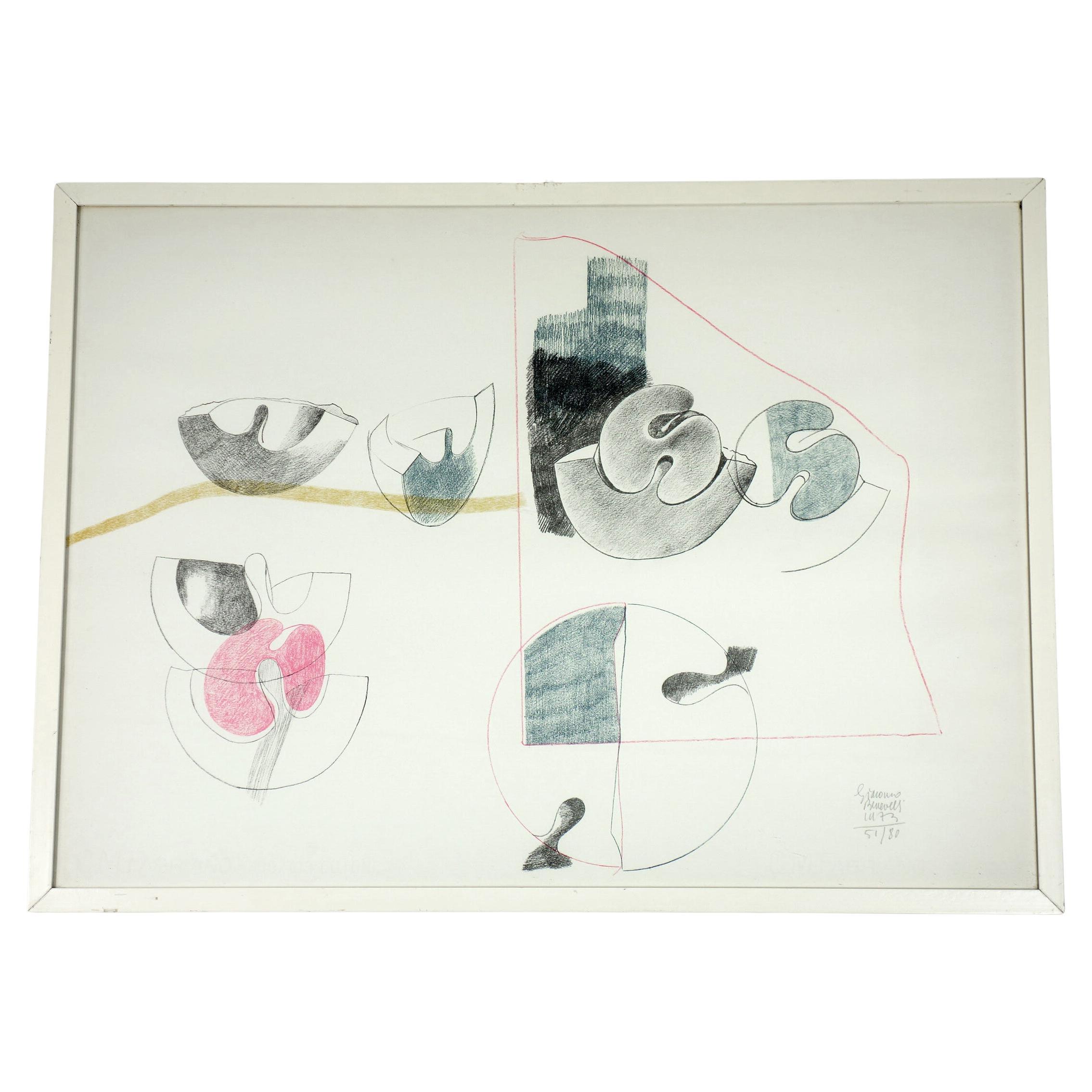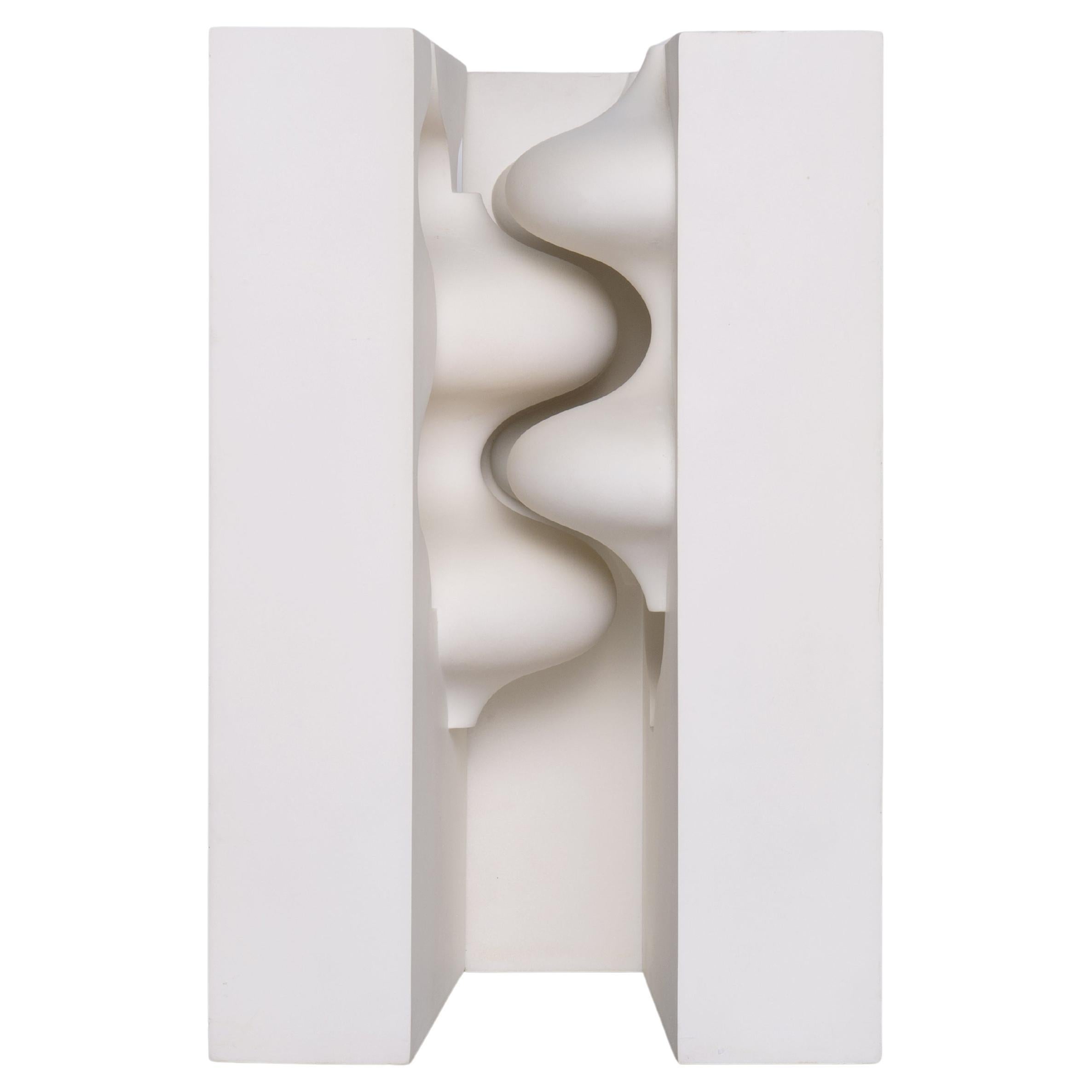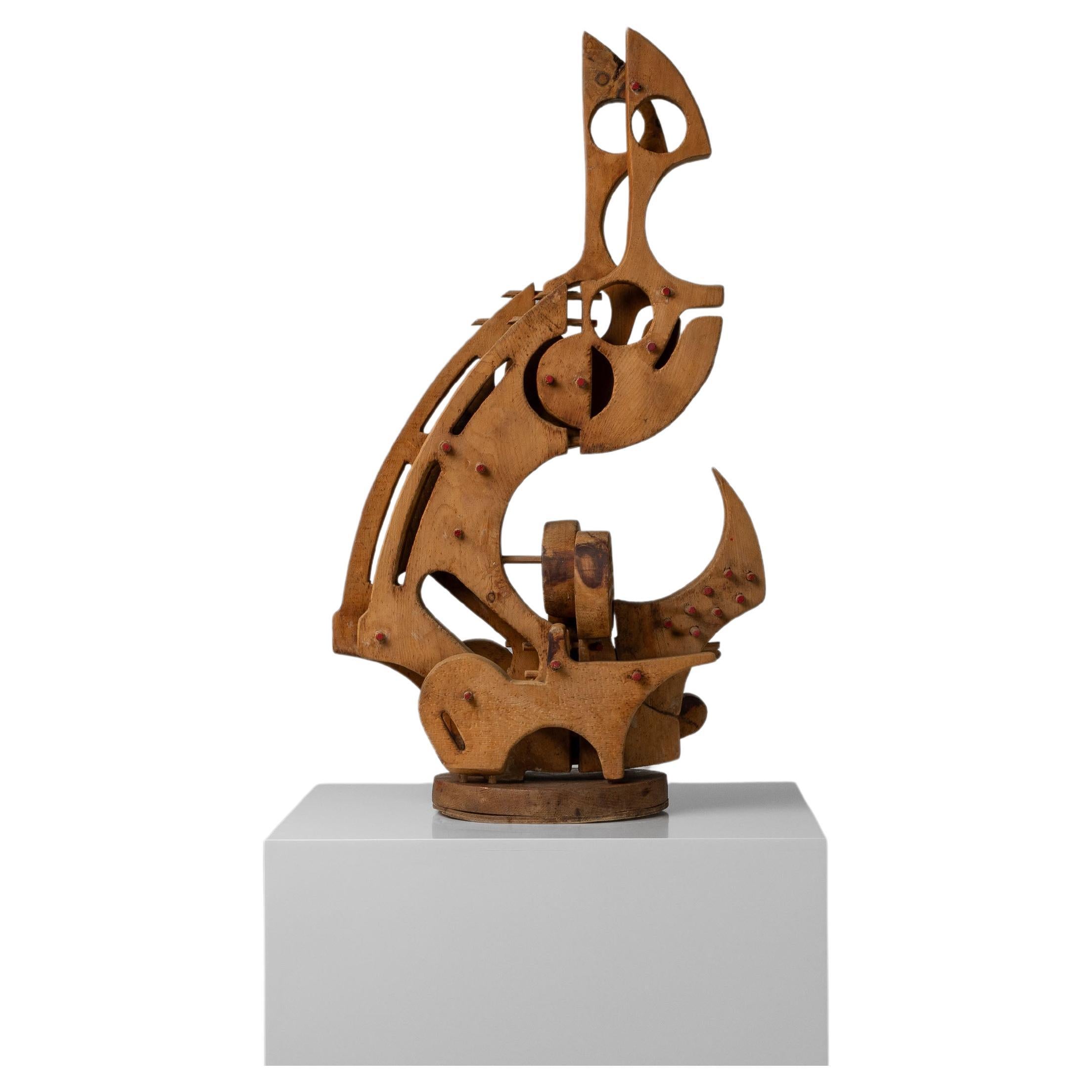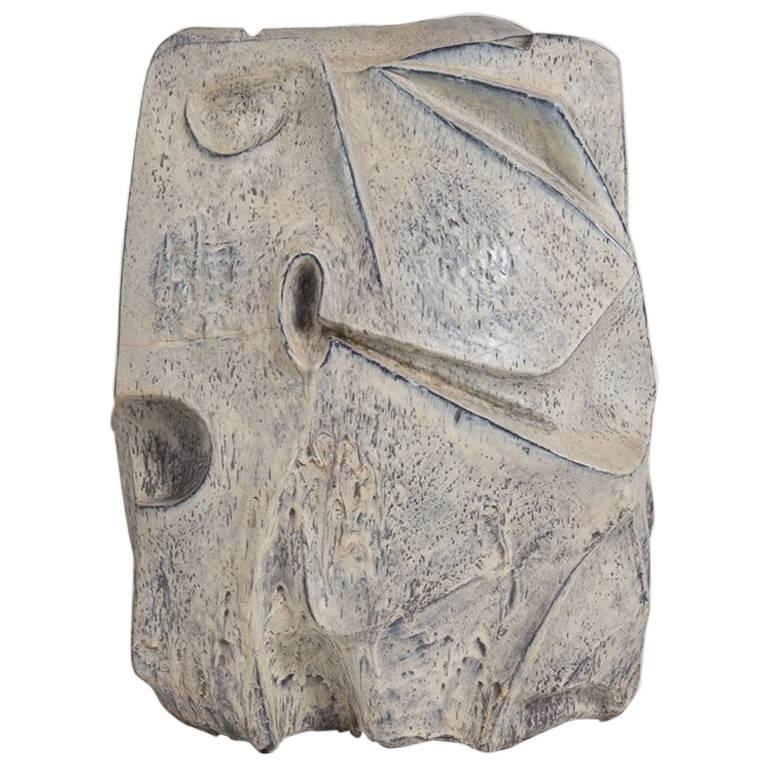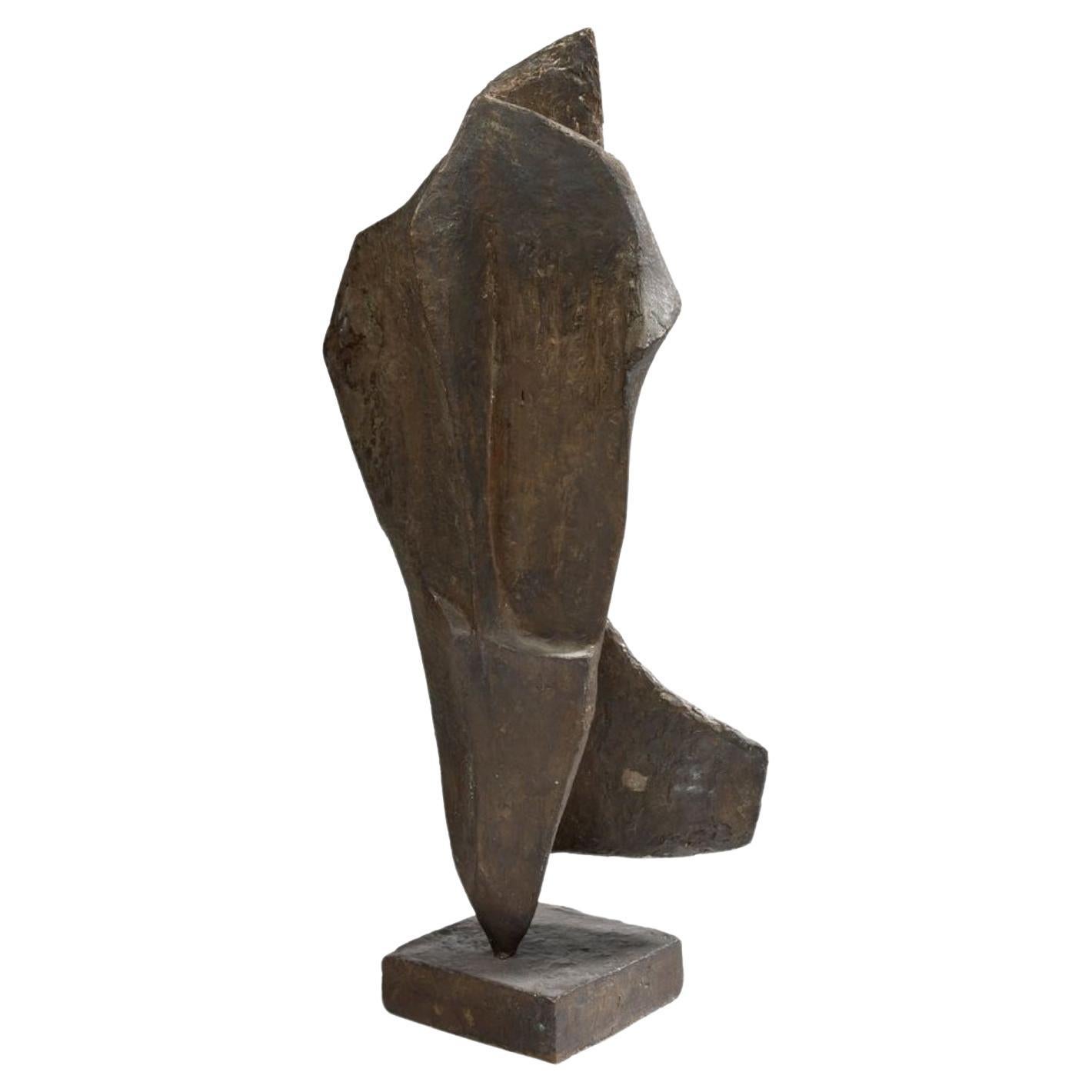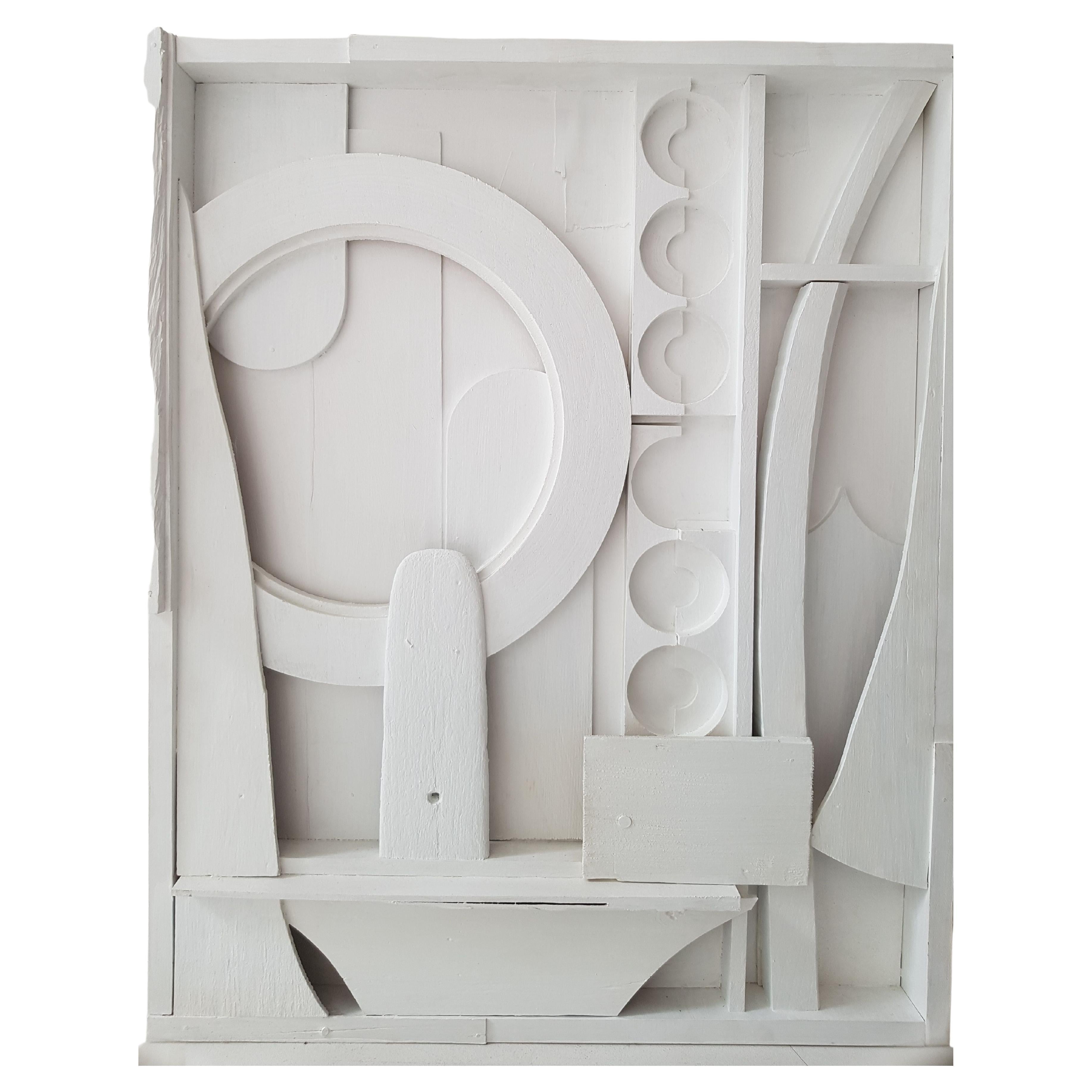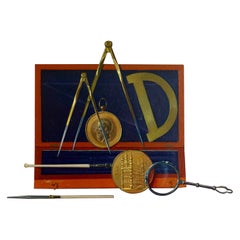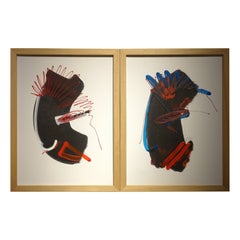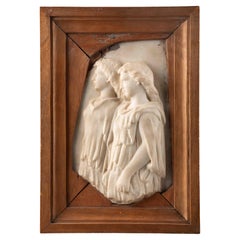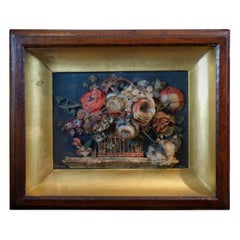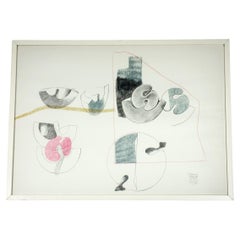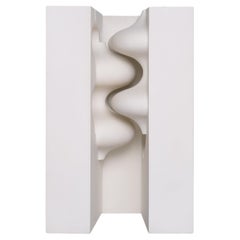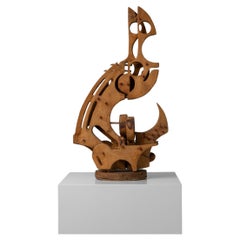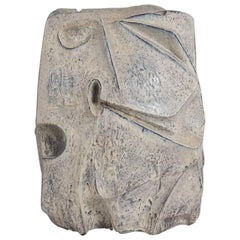Items Similar to Alfio Mongelli -"Scomposizione matematica"- ABC, 1980
Want more images or videos?
Request additional images or videos from the seller
1 of 5
Alfio Mongelli -"Scomposizione matematica"- ABC, 1980
$3,832.75
$5,389.8128% Off
£2,843.92
£3,999.2728% Off
€3,200
€4,50028% Off
CA$5,353.02
CA$7,527.6828% Off
A$5,805.47
A$8,163.9528% Off
CHF 3,049.25
CHF 4,288.0128% Off
MX$70,517.30
MX$99,164.9628% Off
NOK 38,156.60
NOK 53,657.7228% Off
SEK 35,926.57
SEK 50,521.7428% Off
DKK 24,378.40
DKK 34,282.1328% Off
About the Item
Alfio Mongelli (Rome 1939)
Scomposizione Matematica - ABC
75,3 x 65,5 x 10 cm
steel and wood
1980
Steel sculpture on wood; label indicating the title and the author at the bottom right.
- Creator:Italian school XX ct. (Author)
- Dimensions:Height: 29.64 in (75.29 cm)Width: 25.78 in (65.49 cm)Depth: 3.93 in (9.99 cm)
- Style:Modern (Of the Period)
- Materials and Techniques:
- Place of Origin:
- Period:1980-1989
- Date of Manufacture:1980
- Condition:
- Seller Location:Bruxelles, BE
- Reference Number:1stDibs: LU6666229419272
About the Seller
5.0
Vetted Professional Seller
Every seller passes strict standards for authenticity and reliability
1stDibs seller since 2022
15 sales on 1stDibs
Typical response time: <1 hour
- ShippingRetrieving quote...Shipping from: Bruxelles, Belgium
- Return Policy
Authenticity Guarantee
In the unlikely event there’s an issue with an item’s authenticity, contact us within 1 year for a full refund. DetailsMoney-Back Guarantee
If your item is not as described, is damaged in transit, or does not arrive, contact us within 7 days for a full refund. Details24-Hour Cancellation
You have a 24-hour grace period in which to reconsider your purchase, with no questions asked.Vetted Professional Sellers
Our world-class sellers must adhere to strict standards for service and quality, maintaining the integrity of our listings.Price-Match Guarantee
If you find that a seller listed the same item for a lower price elsewhere, we’ll match it.Trusted Global Delivery
Our best-in-class carrier network provides specialized shipping options worldwide, including custom delivery.More From This Seller
View AllPol Mariën (1932) - The attributes of the engraver
Located in Bruxelles, BE
Paul Marien (1932)
The attributes of the engraver
Oil on canvas mounted on panel, signed lower right
30 x 40 cm
In Les Attributs du Graveur, Paul Marien pays homage to the traditio...
Category
20th Century Belgian Modern Paintings
Materials
Canvas
Vittorio Amadio - two African Masks, 2004
Located in Bruxelles, BE
Vittorio Amadio (Italy, 1934)
African Masks
Acrylic on canvas
Signed on the back, 2004
30 x 40 cm
Authenticity certificate
Vittorio Amadio experiments with non-form as an essenti...
Category
Early 2000s Italian Modern Paintings
Materials
Canvas, Acrylic
$1,167 Sale Price
35% Off
Renaissance relief - Italy, probably Rome, 16th century
Located in Bruxelles, BE
Renaissance relief depicting two female figures dressed in a chiton
Italy, probably Rome, 16th century
Marble, wooden frame (provenance label on the back)
28 x 20 x 5 cm
This beau...
Category
Antique 16th Century Italian Renaissance Wall-mounted Sculptures
Materials
Marble
Wax Relief, Italy 19th Century
Located in Bruxelles, BE
Wax relief depicting a vase with flowers
Italy, mid-19th century
Signed "Scot. inv et fecit"
Measures: 37 x 44 x 7,5 cm.
Category
Antique Mid-19th Century Italian Early Victorian Wall-mounted Sculptures
Materials
Wood
$2,874 Sale Price
20% Off
Elegant base in porfido Serpentino Antico
Located in Bruxelles, BE
Elegant fragment in porfido Serpentino Antico
19,5 x 18 x 12 cm
This beautiful fragment can be used as a base made of rare marble, ideal for displaying ancient or modern objects and...
Category
Antique 15th Century and Earlier Italian Classical Roman Natural Specimens
Materials
Marble
Venus Pudica (Medici-type) - 18th century, Italy
Located in Bruxelles, BE
Monumental sculpture representing the Venus Pudica (Medici-type)
18th Century
Italian (Rome)
White marble
Based on a model from Antiquity, the Medici Venus, currently in the Uffizi ...
Category
Antique Early 18th Century Italian Grand Tour Figurative Sculptures
Materials
Marble
You May Also Like
1970 Giacomo Benevelli Litograph Italian Art Sculpture
By Giacomo Benevelli
Located in Brescia, IT
Giacomo Benevelli
Litograph
1973
edition 51/80
Signed and numbered in pencil.
framed
Category
Vintage 1970s Italian Modern Prints
Materials
Paper
Scatola dei Sentimenti by Augusto Betti, 1964
By Augusto Betti
Located in Ozzano Dell'emilia, IT
A true pioneer, Italian artist and designer Augusto Betti between the 50s and the 60s began to experiment with the countless possibilities of new synthetic materials. Among his most ...
Category
Vintage 1960s Italian Abstract Sculptures
Materials
Resin
Valerio Moreschi sculpture Brescia Italy 1979
Located in Roosendaal, Noord Brabant
Large sized abstract sculpture by Valerio Moreschi made in is own workshop in Brescia 1979. Hectic dynamics, burst of imagination and exp...
Category
Vintage 1970s Italian Mid-Century Modern Abstract Sculptures
Materials
Pine
Marcello Fantoni, Abstract Sculpture, Italy, 1977
By Marcello Fantoni
Located in New York, NY
Signed by the artist.
A perfectly balanced abstract sculpture by Italian designer Marcello Fantoni glazed in colors ranging from off white to blueish-gray, which conveys, above al...
Category
Vintage 1970s Italian Abstract Sculptures
Materials
Ceramic
Carlo Ramous, Abstract Composition
By Carlo Ramous
Located in Saint-Ouen, FR
Carlo Ramous (1926-2003)
Abstract composition, Circa 1960
Bronze sculpture with brown patina
Signature of the artist
Foundry’s mark : Fonderie MAF Ramos Milano
Numeroted 2/3.
Category
Vintage 1960s Abstract Sculptures
Materials
Bronze
Contemporary Wall Mounted Sculpture by Aaron Kllc
Located in London, GB
A unique wall mounted relief sculpture using found objects by Aaron Kllc. This unique piece is made from reclaimed wood and objects. It is of a good size and has huge decorative appeal.
We have two examples available.
Aaron is a graduate of Rhode Island School of Design who felt inspired by the possibilities of creating sculpture out of discarded objects focusing on the themes of positive and negative space.
He works with paint, clay and glass and found objects.
His interest in Japanese and California Modernism...
Category
2010s American Organic Modern Wall-mounted Sculptures
Materials
Reclaimed Wood
$981 Sale Price
20% Off
More Ways To Browse
Abc Modern
Large Abstract Stone Sculpture
Swedish Heart
Table Top Metal Sculpture
Vasa Acrylic
Vintage Glass Mannequin Head
Wood Sculpture Tower
1970s Chrome Sculpture
Antonine De Saint Pierre
Bicycle Sculptures
Bronze Totem Sculpture
Peter Layton
Van Teal Lucite Sculpture
Alessandro Mendini Totem
Bronze Table Top Sculpture
Geometric Shapes Sculpture
Large Modern Table Sculpture
Lucite Cube Sculpture
